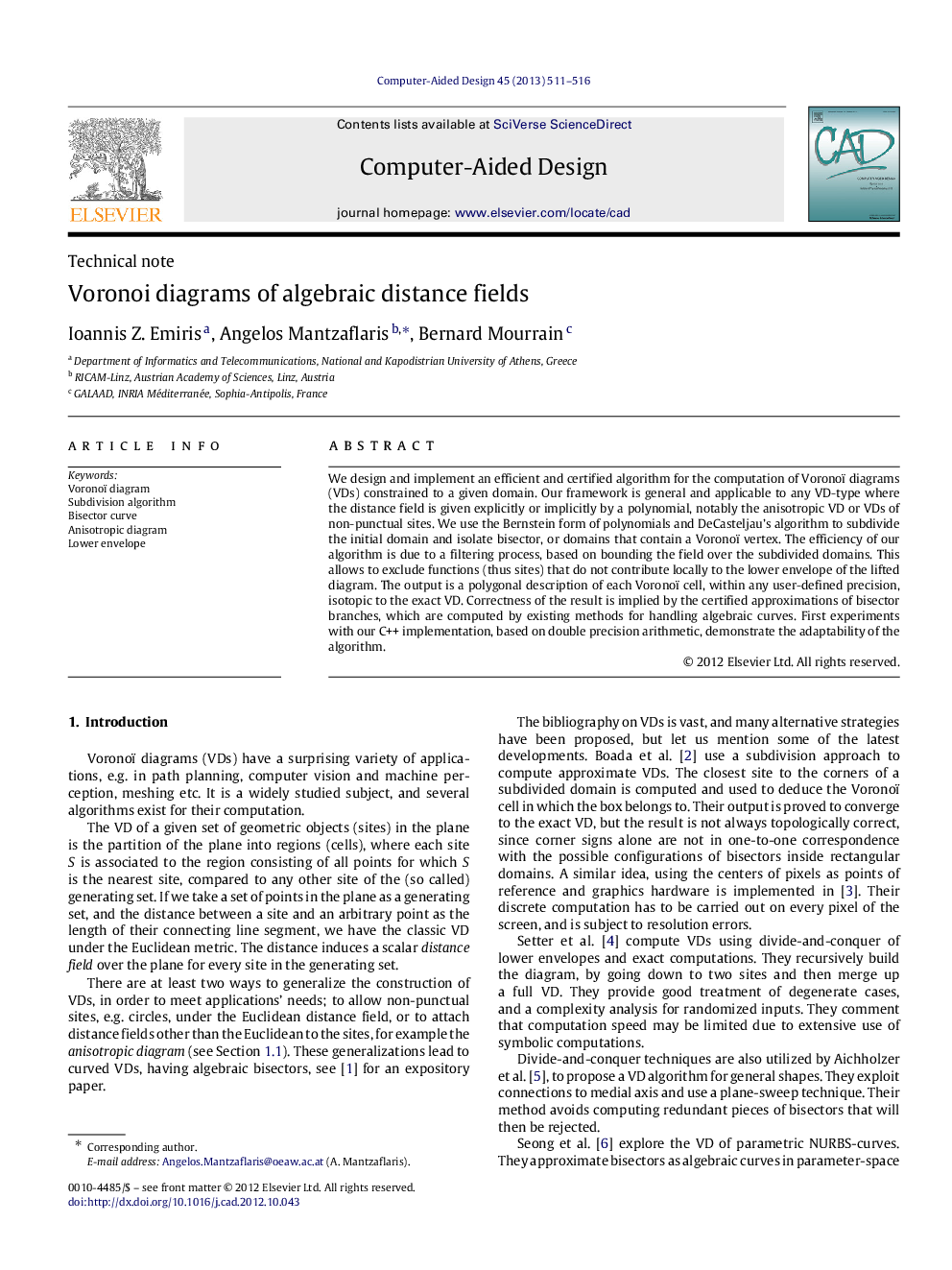| Article ID | Journal | Published Year | Pages | File Type |
|---|---|---|---|---|
| 440176 | Computer-Aided Design | 2013 | 6 Pages |
We design and implement an efficient and certified algorithm for the computation of Voronoï diagrams (VDs) constrained to a given domain. Our framework is general and applicable to any VD-type where the distance field is given explicitly or implicitly by a polynomial, notably the anisotropic VD or VDs of non-punctual sites. We use the Bernstein form of polynomials and DeCasteljau’s algorithm to subdivide the initial domain and isolate bisector, or domains that contain a Voronoï vertex. The efficiency of our algorithm is due to a filtering process, based on bounding the field over the subdivided domains. This allows to exclude functions (thus sites) that do not contribute locally to the lower envelope of the lifted diagram. The output is a polygonal description of each Voronoï cell, within any user-defined precision, isotopic to the exact VD. Correctness of the result is implied by the certified approximations of bisector branches, which are computed by existing methods for handling algebraic curves. First experiments with our C++ implementation, based on double precision arithmetic, demonstrate the adaptability of the algorithm.
Graphical abstractFigure optionsDownload full-size imageDownload as PowerPoint slideHighlights► We present a general framework for VD computation based on subdivision and filtering. ► Implicit or explicit distance fields of arbitrary algebraic degree are allowed. ► Effective use of Bernstein representation in tracking bisectors and Voronoï vertices. ► Tests on Euclidean, lplp, anisotropic sites, extension to circular, elliptic sites. ► By assigning a different metric per site, mixed Voronoï diagrams are also supported.
